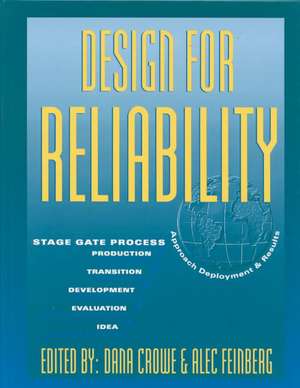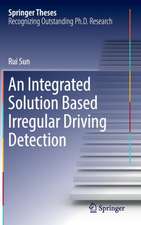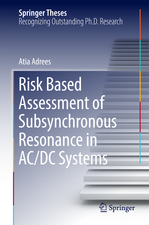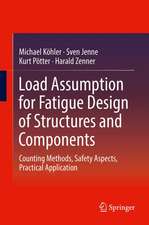Design for Reliability: Electronics Handbook Series
Editat de Dana Crowe, Alec Feinbergen Limba Engleză Hardback – 30 apr 2001
Design for Reliability provides a systematic approach to the design process that is sharply focused on reliability and firmly based on the physics of failure. It imparts an understanding of how, why, and when to use the wide variety of reliability engineering tools available and offers fundamental insight into the total design cycle. Applicable from the idea phase of the product development cycle through product obsolescence, Design for Reliability (DfR) concepts integrated with reliability verification and analytical physics form a coherent stage gate/phase design process that helps ensure that a product will meet customers' reliability objectives.
Whether you are a high-volume manufacturer of consumer items or a low volume producer of military commodities, your goal is the same: to bring a product to market using a process focused on designing out or mitigating potential failure modes prior to production release. Readers of Design for Reliability will learn to meet that goal and move beyond solidifying a basic offering to the marketplace to creating a true competitive advantage.
Preț: 1060.87 lei
Preț vechi: 1293.75 lei
-18% Nou
Puncte Express: 1591
Preț estimativ în valută:
203.06€ • 220.64$ • 170.68£
203.06€ • 220.64$ • 170.68£
Carte tipărită la comandă
Livrare economică 21 aprilie-05 mai
Preluare comenzi: 021 569.72.76
Specificații
ISBN-13: 9780849311116
ISBN-10: 084931111X
Pagini: 256
Ilustrații: 200 b/w images, 31 tables and 189 equations
Dimensiuni: 219 x 276 x 20 mm
Greutate: 0.63 kg
Ediția:1
Editura: CRC Press
Colecția CRC Press
Seria Electronics Handbook Series
ISBN-10: 084931111X
Pagini: 256
Ilustrații: 200 b/w images, 31 tables and 189 equations
Dimensiuni: 219 x 276 x 20 mm
Greutate: 0.63 kg
Ediția:1
Editura: CRC Press
Colecția CRC Press
Seria Electronics Handbook Series
Public țintă
ProfessionalCuprins
THE STAGE GATE PROCESS. Reliability Science. Understanding Customer Requirements. Design Assessment Reliability Testing. Design Maturity Testing (DMT). Screening and Monitoring. SUPPORTING STAGE GATE. Semiconductor Process Reliability. Analytical Physics. TOPICS IN RELIABILITY. Reliability Statistics Simplified. Concepts in Accelerated Testing. Accelerated Reliability Growth. Reliability Predictive Modeling. Failure Modes and Effects Analysis. Evaluating Product Risk. Thermodynamic Reliability Engineering.
Recenzii
"This book is definitely a strong addition to the body of knowledge for Reliability professionals and for any company that wants to improve the business competitiveness by improving product reliability…I have been fortunate to know [the DfR activity at M/A-COM/Tyco] and I also know how impressed other organizations are when they get to see it. This is an outstanding industry leader that has documented the implemented practice in this book."
--James E. "Gene" Bridgers, RESULTS MA
"…a practical and useful book…description of the 'stage gate approach'…emphasis on accelerated test methods…description of physics of failure and failure investigation techniques…"
Patrick O'Connor, author of Practical Reliability Engineering in Quality & Reliability Engineering, 2001
--James E. "Gene" Bridgers, RESULTS MA
"…a practical and useful book…description of the 'stage gate approach'…emphasis on accelerated test methods…description of physics of failure and failure investigation techniques…"
Patrick O'Connor, author of Practical Reliability Engineering in Quality & Reliability Engineering, 2001
Descriere
Design for Reliability provides a systematic approach to the design process that is sharply focused on reliability and firmly based on the physics of failure. It imparts an understanding of how, why, and when to use the wide variety of reliability engineering tools available and offers fundamental insight into the total design cycle. Applicable from the idea phase of the product development cycle through product obsolescence, Design for Reliability (DfR) concepts integrated with reliability verification and analytical physics form a coherent stage gate/phase design process that helps ensure that a product will meet customers' reliability objectives.





















